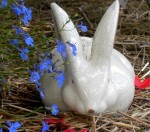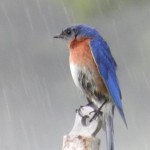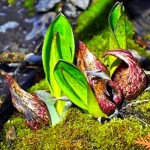It had been weeks since the last time it was warm enough to walk—a relative statement since it was only twenty degrees outside. I discovered my boots leaked while I walked along Leeward Drive. I stepped around slush puddles as best I could.
My cheeks and nose tingled from the cold. Today the sun had finally come out, and with all the snow it was blinding. The amount of snowfall since mid December set a record. Not only had there been a lot of snow, but nearly every day for the past month had been overcast. I wanted to feel the sun’s rays on my face, not filtered through glass.
Sunlight is important for us and the same is true for plants. Like houseplants, I too can become dull and stressed from an unusually dark winter.
There are specific terms for how plants respond to light. The one we are most familiar with is photosynthesis. This is how the plant absorbs sunlight, and through a series of metabolic processes, grows. Even when sufficient water and nutrients are present, without light plants die.
One houseplant that makes it obvious when light is low is the Maranta. It exhibits a photonastic response to light by folding its leaves together—and this is how it got its common name, Prayer Plant. This response to the lessening of light is also true of Oxalis (shamrocks), and the flowers of tulips and South African gazania (shown above). When light dims, they fold.
When a lot of houseplants are crowded around a window we see a directional movement—stems and leaves bend toward the sun. Growing towards the light is called phototropism.
There is another way plants move in response to light. Heliotropism is a plant’s ability to follow the sun across the sky. We see this occurring in the rotating heads of the sunflower. The sunflower’s botanical name is Helianthus, from Greek comes helios, for sun.
Of all the plant responses resulting from light, the one I was most fascinated with as a grower was photoperiodicity. It signals the plant what season it is and when to flower…and ultimately set fruit. Photoperiodism is the specific duration of light—long day/short night or long night/short day—needed for a plant to set bud. A familiar plant that needs long nights to color up is the poinsettia. The longer days of summer allows the carnation and bellflower to flower, as well as oats and clover. In both situations—long day or long night—light duration is essential.
The parables I find with light are as familiar to me as the Bible’s parables of seeds and soil. And evoke as many questions as to who am I as a Christian.
How do we grow in the Light of Christ? Do we fold up when God does not feel near? When we turn toward the Light, are we so focused on it that we become lopsided and turn our backs on our world? Can we, like the sunflower, be attentive to the Light and follow it throughout our day? Do we in our long nights wait for the Light? In our long days do we trust there will be rest?
We are illumined by the light of the Gospels. I pray that the Light of Christ is always felt and followed. That we continue to grow and bear spiritual fruits. And in our days we carry the Light, in our nights console those in darkness.
Day unto day takes up the story and night unto night makes known the message. Psalms 19:2
(Image from Flicker, photographer Marg, http://bit.ly/1fQqM5w)











